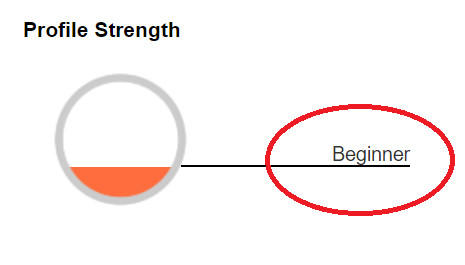 So far, it's been going well, you've planned your route and prepared yourselves, and now we're setting off on the journey to agile performance management.
So far, it's been going well, you've planned your route and prepared yourselves, and now we're setting off on the journey to agile performance management.
Bad news though! Your journey begins by climbing a very steep incline.
For most people, years of undergoing traditional performance management have created baggage. The raft of stories about rankings, and ratings and bias that our inner voices tell us, create strong neural pathways in the brain. Those pathways (or memories) subconsciously suggest that more frequent performance management can only be a bad thing, and this means you're going to face resistance.
You're going to need four-wheel drive to climb over your steep hill of resistance!
To do this, at the outset of your journey to agile performance management you will need to
- Change the vehicle you're driving,
- Select the right gear,
- Avoid sliding back, and
- Use goal gradients to motivate progress.
Change the vehicle you're driving
If performance management and feedback are trigger words that bring on negative thoughts, the most effective thing to do is to stop using them.
Early adopters of agile performance management have branded their new approaches with names or acronyms that distance their new approaches from old.
They've adopted new systems of engagement to create mindshare around self-ownership and personal accountability, versus trying to repurpose HR information systems that people already see as belonging to HR and used for transactions like booking leave and checking payslips.
Through branding and technology, they've visibly changed the vehicle they're driving and picked one that's purpose made for the terrain.
+ Accenture talk about performance achievement
+ T-Mobile have Sync and Amp conversations
+ GAP call their system GPS (also their stock ticker)
+ and on the Pay Compliment platform our favourite client branding is "Let's Talk"
All of these names cleverly reinforce the culture of the respective companies and change the focus of performance management away from management, and towards support for personal achievement.
Show you're committed to a different path forward by branding a process and/or platform and you'll quickly disconnect your people's mindset from the stigma of their old experiences.
This is the vehicle for your new approach. It's important for success because the less distance there is between old and new, the steeper the climb you'll need to make.
Select the right gear
When you introduce a new paradigm you want to create a positive mental association to it. The positivity to negativity ratio of early interactions is critical to this.
Your 6:1 gear ratio
Studies of high performing teams show the optimal ratio of positive to negative feedback is somewhere between 6 to 8 positives for every negative.
The reason being the brain is 6 to 8 times better at storing and recalling negative or harmful experiences than pleasurable ones. It's how we've survived.
You'll want to encourage praise, gratitude, and affirmations to get a reward response in people from their early experiences of your new approach.
Interestingly though, exclusively positive feedback doesn't yield the best reward response. Go above 11:1 positives to a negative and you'll start to feed concern there's not enough stretch or opportunity to learn. At that point, feedback starts to matter less.
Getting the balance right is important. You'll undo all of the good work of selecting the right vehicle if you don't drive it correctly.
A common mistake is to not have the right measurements (or any measurements) to know the quality of conversations, and even if they're taking place at all. Make sure you can measure the gear you're in for your hill climb to be as smooth and rapid as possible.
Avoid sliding back
Did you know that about 40% of your daily life is based on habits?
The habit loop explains how habits are formed. There are various versions, and I like the 3R's by James Clear because it's easy to remember; Reminder, Routine, Reward.
When people start to feel intrinsically rewarded by their feedback they are on their way to creating a habit.
To make that habit stick, and avoid sliding back, we need continual reminders (or cues) to repeat our new feedback routines.
A very effective way to create such cues and routines is to add the act of asking for and giving feedback to existing processes. Add a new link in an existing chain.
- Completed a project milestone? Ask for feedback from your co-workers
- Delivered a report? Ask for feedback from your client
- Is it payday? Give feedback to your team members
- Had a meeting? Who's contribution was feedback worthy
- Got interrupted? Is there feedback in mind that you've now a moment to share?
- Getting coffee? Just enough time to post a message in your feedback App!
Reminders and routines are personal. To avoid a gradual slide back to the start of your hill of resistance, it's important to create awareness of as many reminder cues you can think of, and for individuals to be mindful of the reminders and routines that work for them.
Use goal gradients to motivate progress
Experiments show that the closer we get to a goal, the more our efforts towards it increase. We become more motivated to complete the goal as we approach the result than we were at the start.
It's called the goal-gradient effect. The psychology of coffee cards is a fun way to learn about this.
You can use the goal-gradient effect to your advantage on the journey to agile performance management.
By breaking up your hill climb into many smaller goals, celebrating the completion of these, and carefully communicating progress towards your major goal, you will move faster overall.
To fully utilise the goal-gradient effect this LinkedIn example shows how visuals can be more powerful than words.

As a beginner (I haven't done anything yet) I am already part way through building my profile strength and because I have the illusion of already starting this, my brain is telling me I need to finish!
Two micro goals to add a photo and save a few preselected skills is all it takes to get to intermediate level. By then it looks like I am almost halfway done in building my profile strength.
Almost halfway is deliberate. There is no actual halfway point. It's not good to get stuck in the middle so the next increment will take me way past that as you can see below.
I'm now so close to completing this that I'll get there whatever it takes.
Make sure to use motivating metrics and visualisations to spur on your people during every stage of your journey, and particularly this first one.
Completing the hill climb
You will soon start to see the behavioural changes that create a feedback-rich culture if you can
- Use processes and systems that are specifically designed to empower your people and drive engagement rather than compliance
- Achieve the right balance between affirming and adjusting feedback to create a reward response to feedback overall
- Raise mindfulness of the reminders and routines that sustain a feedback habit, and
- Celebrate continual progress by breaking your journey into many small chunks
All of these techniques are embedded into the Pay Compliment feedback platform to help you climb this hill and to continue on to the next stages of your journey to agile performance management.